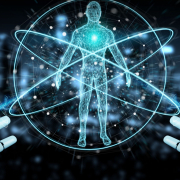Artificial Intelligence: A Revolution in Rehabilitation?
Artificial Intelligence (AI) is transforming how medical professionals approach rehabilitation, offering innovative tools that enhance the quality of treatment. At ISICO, we are increasingly committed to exploring how AI can support daily clinical work and contribute to highly personalised therapeutic decisions.
We discussed this with Francesco Negrini, a specialist physiatrist at ISICO and the author of a groundbreaking 2023 study on AI and rehabilitation. This study, “Developing a new tool for scoliosis screening in a tertiary specialist setting using artificial intelligence: a retrospective study on 10,813 patients,” won the prestigious SOSORT Award in 2023.
Dr Negrini recently presented another paper exploring the use of AI in rehabilitation projects, particularly in stroke recovery.
What Are the Key Areas Where AI Can Be Used in Rehabilitation?
Artificial Intelligence (AI) is incredibly versatile and can be applied at various stages of the medical process. It can range from diagnosis, using automated analysis of X-ray or MRI images to identify pathologies with greater precision, to prognosis, with predictions on treatment outcomes, and on to the personalisation of treatments, determining the most effective therapeutic pathway based on patient data. AI also enables continuous monitoring, allowing real-time patient progress evaluation to adapt the treatment accordingly.
At ISICO, we are exploring, for example, how AI can support personalised treatment approaches. This technology could analyse a patient’s natural history and the likelihood of success when using one type of brace over another, providing physicians with more accurate decision-making tools.
Can you give a concrete example of how ISICO is using AI?
A significant example is the research that won the SOSORT Award 2023, recently published (link). The study demonstrated how analysing clinical data using advanced techniques can enhance our understanding of scoliosis and its treatments.
Another potential application involves the diagnosis of low back pain, where AI can analyse radiographic images to identify aetiologies that the human eye might otherwise miss. This approach takes advantage of today’s enhanced computational power, enabling the rapid and accurate processing of large volumes of data.
How Could AI Transform the Management of Spinal Disorders in the Future?
There are three key areas where we see tremendous potential. The first is screening and early diagnosis, which involves early detection of scoliosis or other conditions to improve treatment outcomes. The second area is the customisation of braces, using data collected from clinical centres to predict which type of brace will be most effective for a specific patient. Lastly, monitoring outcomes plays a crucial role, as it allows for tracking the progress of therapy and adapting it based on observed improvements, thereby enhancing the overall effectiveness of treatment.
What Makes AI Such a Valuable Ally for Clinicians?
AI amplifies a clinician’s capabilities, providing more detailed information and helping them make data-driven decisions. However, as we always emphasise at ISICO, the doctor-patient relationship remains central. AI does not replace a clinician’s experience and empathy; instead, it offers tools that enhance human expertise.
What is the Future of AI in Rehabilitation Medicine?
I believe we will see an increasingly close integration of AI in clinical practice. At ISICO, we are moving in this direction, exploring how AI can improve therapeutic outcomes and make rehabilitation more targeted. We are just at the beginning, but the possibilities are immense, especially if we can combine the best of technology with the invaluable expertise of healthcare professionals.

